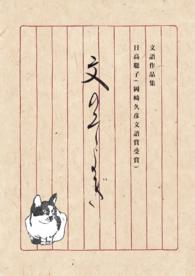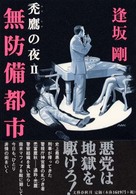- ホーム
- > 洋書
- > 英文書
- > Cinema / Film
Full Description
Steven Spielberg once said, "I like ideas, especially movie ideas, that you can hold in your hand. If a person can tell me the idea in twenty-five words or less, it's going to make a pretty good movie." Spielberg's comment embodies the essence of the high concept film, which can be condensed into one simple sentence that inspires marketing campaigns, lures audiences, and separates success from failure at the box office.
This pioneering study explores the development and dominance of the high concept movie within commercial Hollywood filmmaking since the late 1970s. Justin Wyatt describes how box office success, always important in Hollywood, became paramount in the era in which major film studios passed into the hands of media conglomerates concerned more with the economics of filmmaking than aesthetics. In particular, he shows how high concept films became fully integrated with their marketing, so that a single phrase ("Just when you thought it was safe to go back in the water...") could sell the movie to studio executives and provide copy for massive advertising campaigns; a single image or a theme song could instantly remind potential audience members of the movie, and tie-in merchandise could generate millions of dollars in additional income.
Contents
Acknowledgments
1. A Critical Redefinition: The Concept of High Concept
The Entertainment Industries on High Concept
The Critics on High Concept
Economics, Aesthetics, and High Concept as "Post" Classical Cinema
Micro- and Macro-Analysis: Style, Marketing, and Differentiation of Product
"The Look, the Hook, and the Book"
2. Construction of the Image and the High Concept Style
Advertising as an Influence on Style
"You've Got the Look": Perfect Images in High Concept Stars and Style
Music as an Element of Style
Excess in High Concept: The Promotional Music Video
The High Concept Image: Character Types and Genre
Style, Classical Hollywood, and the Art Cinema
3. High Concept and Changes in the Market for Entertainment
The Marketplace and Traditional Definitions
Conglomeration and Film Content: The Roadshow, The Youth Picture, The Blockbuster
Uncertainty in the Marketplace: The Development of the Contemporary Industry Structure
Differentiation of Product
High Concept as Product Differentiation
4. Marketing the Image: High Concept and the Development of Marketing
Changing Distribution Patterns
Awareness Marketing: High Concept in Print
Maintenance Marketing: Selling through Music and Product
Merchandising and Ancillary Tie-ins
5. High Concept and Market Research: Movie Making by the Numbers
The Growth of Market Research
The Model of Market Research within the Film Industry
Case Study: Determining Boxoffice Revenue
Theorizing the Positive Influences on Boxoffice Gross
Specification of the Model
Estimation of the Model and Results
Manipulation, Control, and High Concept
Factors Influencing the Decline of Market Research
6. Conclusion: High Concept and the Course of American Film History
The Transformation of the Auteur
Television and the Ideological Agenda of High Concept
The Alternatives to High Concept
Notes
Index







